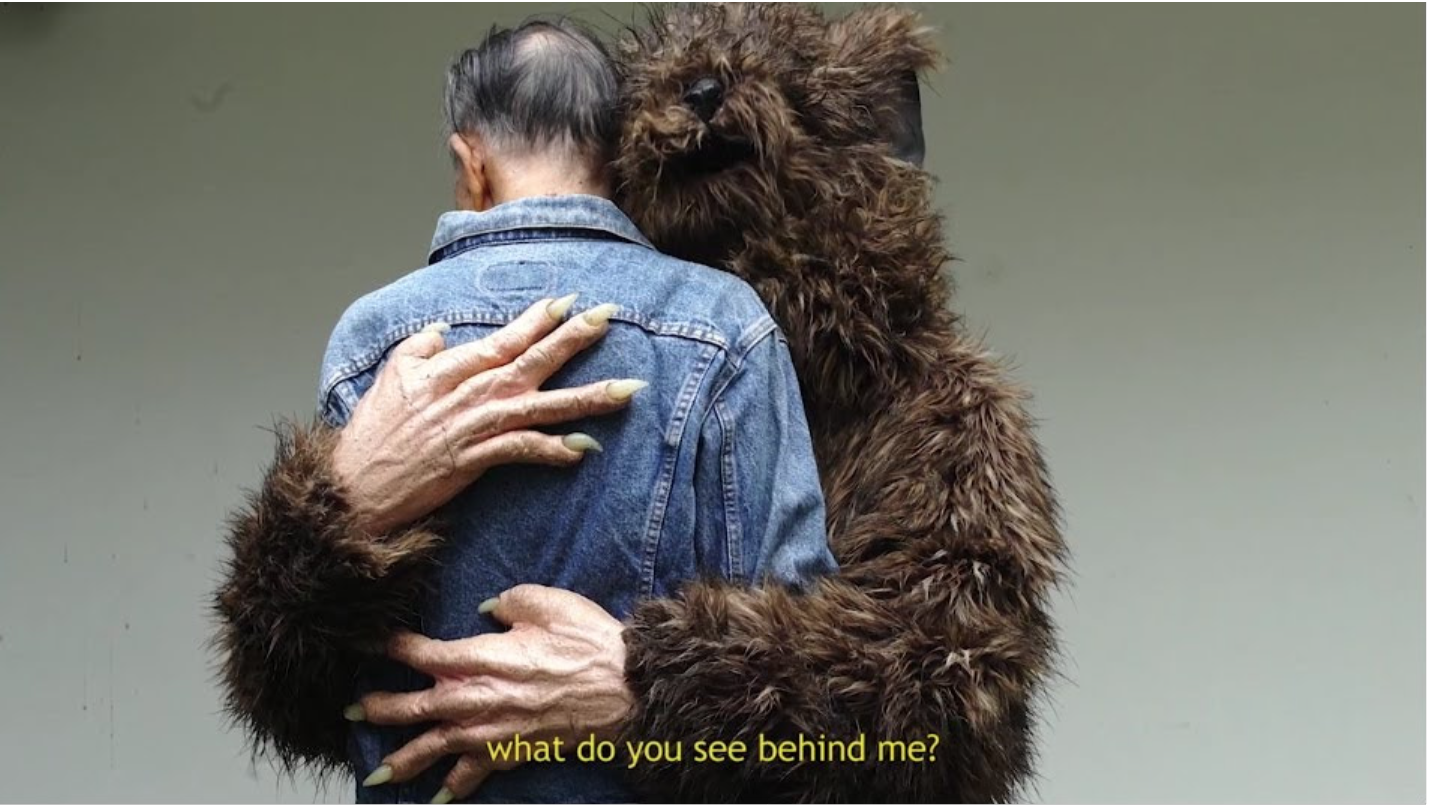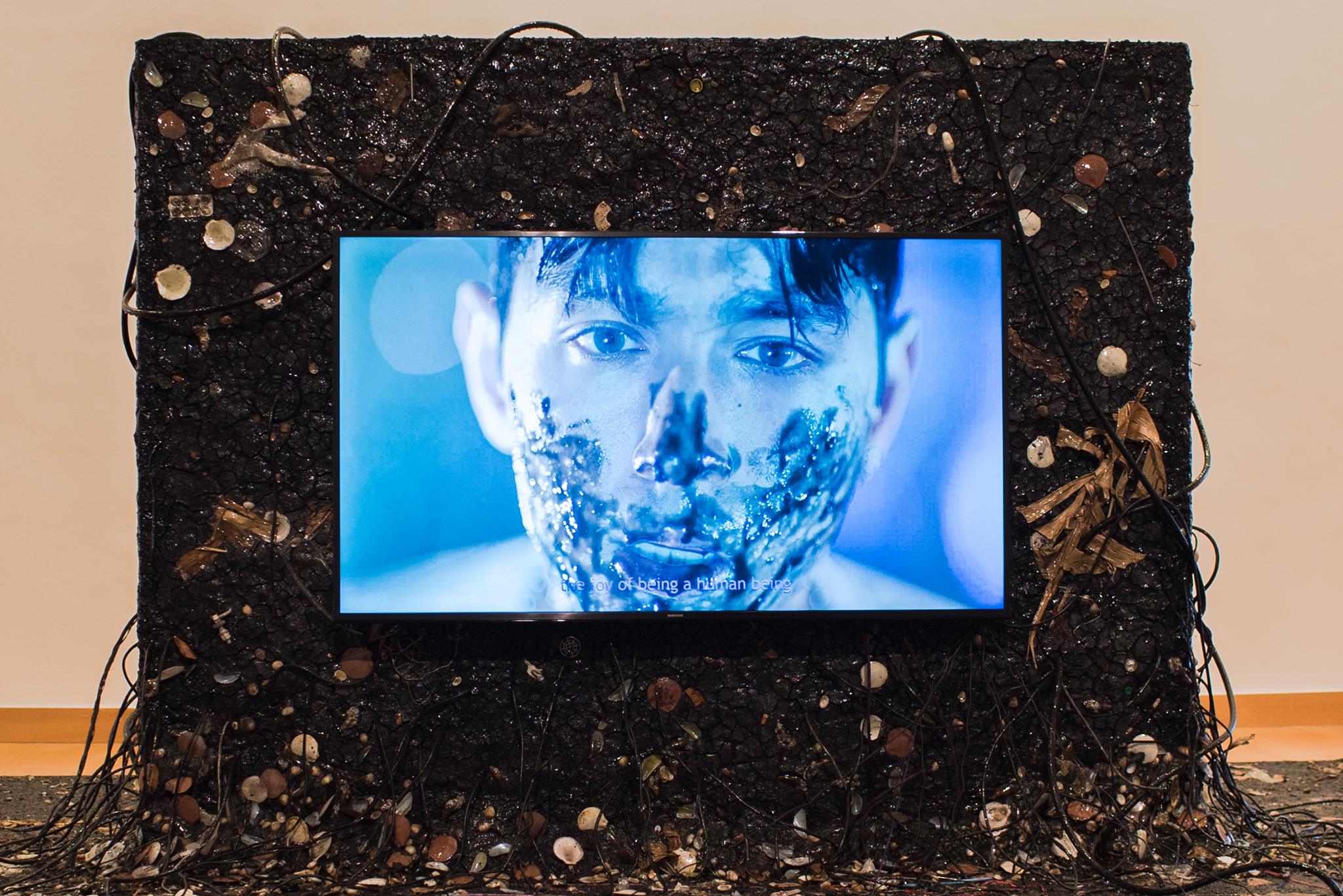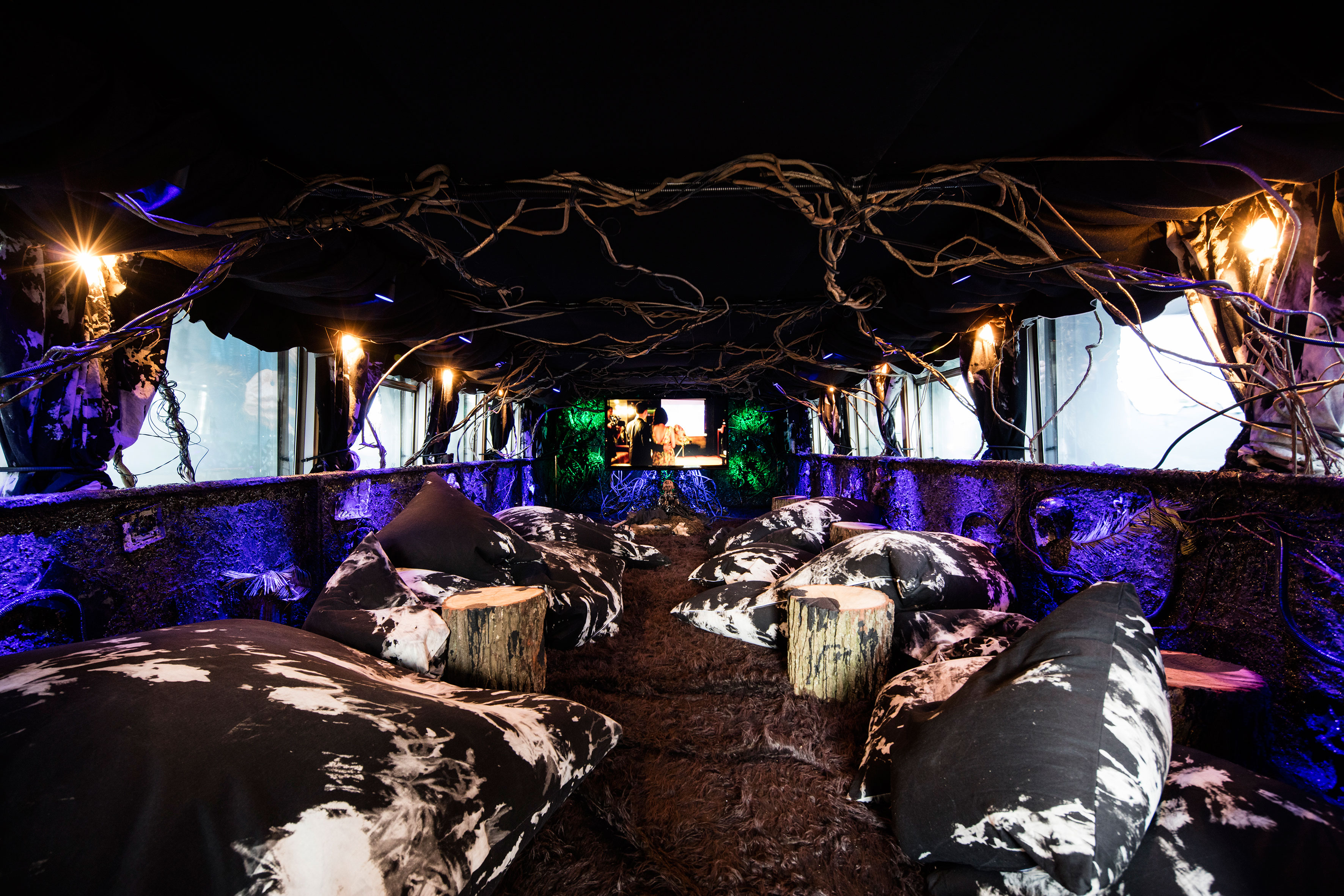Cinerama exhibition at SAM 8Q: Scanning by Amy Lee Stanford
Analysis & Review
When entering Cinerama exhibition in Singapore Art Museum (SAM) at 8Q, the artworks displayed gave the feeling that they were depictions of individual artists’ memories in their own context. One artwork that could have easily went unnoticed was ‘Scanning’ created by Amy Lee Stanford. Upon entering a dark corridor at the corner of a room on the fourth level, visitors would be greeted by a silent video art of scribbled papers being scanned from the top view perspective of the artist. Such angle of the camera invites Museum visitors to analyze and feel the emotions that were scribbled hurriedly on the papers.
At the first impression, ‘Scanning’ gave off a mundane feeling. Questions started to pop in my head: Why did the artist chose to scan these letters repeatedly? What was the significance of this process?

With only four headsets provided by the Museum and a small bench in the middle of the space, the artwork was presented both as a one-to-many (due to the video projection on the wall) and one-to-one (due to the headset) experience. The artwork was accompanied by a photocopy machine soundscape that formed an immersive environment as visitors put the headsets on. This method reminded me of the Autonomous Sensory Meridian Response (ASMR) experience where the sound created a pleasant tingling sensation as the papers were flipped and scanned.
At the second round of viewing the artwork with explanations from the docent, ‘Scanning’ gave me another perspective, which was remembrance and reconstruction. Handwritten letters were an exchange between her Cambodian biological father and American adopted mother during the troubled times in Cambodia. They were written on onion-skin thin paper which was so fragile. Just like memories they will fade over after a period of time but to remember these memories we flip through things or go to places that trigger them. The remembrance part was the scanning of these letters where the artist goes through the constant cycle so that she will not lose the data and the memories of her parents. Reconstruction was similar to the process of forensic science where she pieces these letters to recall and archive these memories that were so precious to her.
Although the repetitive motion of the paper scanning was fast that visitors were not able to go through the content, the scribbled handwriting was sufficient to evoke a sense of sentiment being exchanged.
Artist’s Process
Known for addressing the repercussions of war, especially in Cambodia, Sanford had used common everyday objects to narrate the story of her artworks. As quoted by her, “Art can explore and express aspects of life that are extremely difficult to discuss”. In her piece “Scanning”, the simplicity of displaying, sharing and at the same time archiving the letters to the mass brought focus to something so marginal, yet so significant.
The concept drew influence from her father. She was separated from him at the age of two. Her parents were exchanging 250 letters from 1968 to 1975 before her father died in the Khmer Rouge. Sanford attempted to investigate, reconnect and piece together fragmented memories by using the letters. She wanted to present the process of searching of the past without any possible clues and no starting point. The repeated motion signified there was no beginning and ending in this process. She had performed the concept of “flashing moments” of scattered snippets for her audience to grasp as she scanned every page of the letters. The letters were projected on a monumental scale as she magnified every cease, fold and texture of the papers.
Like excavating one’s past and memories, Sanford shared her process of archiving the letters as she encouraged her audience to give thought about how war had influenced our present lives and how everyday objects taken from the past gave insights to people in the present. The artist believed that through her artwork it would evoke conversations among those who felt that the experience was a taboo matter. Through her artwork, the artist hopes to explore and express things that would be hard to talk about. As people reflect about the idea behind her artwork, she hoped that it would help them lessen their psychological trauma and provoke further conversation between people.
Cinerama exhibition at SAM 8Q: There's a word I'm trying to remember, for a feeling I'm about to have (a distracted path toward extinction)," 2016 by Korakrit Arunanondchai/Alex Gvojic.
Film Content Analysis
In Korakrit Arunanondchai’s and Alex Gvojic’s “There’s a word I’m trying to remember, for a feeling I’m about to have (a distracted path toward extinction)”, the film focuses largely on the dualities of life and death. The artists weave intertwining threads that draw comparisons between present circumstances of living and the eventual collapse of humanity’s constructed systems. A lot content is covered in the film where at times you’d see more light-hearted themes like his brother’s weddings, dinosaurs, recent technology and also darker themes but also the eventually end or extinction of everything.
“In this new digital age, even memories can be construed as yet another form of data that can be readily transmitted through a vast cyberspace.” This is an interesting that I’ve never thought about but through the subtle portrayal through the man who seems to be surrounded often with wires and technology related objects where at the end he plugs out a wire and laid still. It was as if he was “died” then and his “memories” (all the scenes we saw him in) are just transmitted to us now as we watched it.
Following the point of the eventually extinction of everything, it is not only limited to just living things but non-living things as well. It was interesting how they choose to portray this with of the popular and in technology like VR headsets and augmented reality but ever so briefly. In my opinion it felt like a play to show this “popular” and “important” things in current times would just be as if its so “non-existent” in the future.
Moving on to the two metaphors that are big pieces of the film. Why the choice of rats and serpents? I couldn’t understand that from the film so I googled on their symbolism.
Rat Symbolism
- Survivor
“This creature is an incredible survivor despite being one of the two most hunted animals of prey. Humans have condemned them for over 8 centuries. From a symbolic standpoint, this is huge. See, what really matters here is how Rats have continued to survive despite public opinion – despite the war against them.”
The phrase “despite the war against them” suggest to me in the context of the film is that they could have survived against the humans, as the stronger species according to evolution thus why the appearance of “giant rats” after humans. However in the film, the meet their end as well hence I realized the further emphasize on the point of how everything comes to extinction in the end no matter how great at surviving you are.
- Resourceful
Rats are also known to be able to move into the corners and cracks of reality scavenging whatever they need from what the rest of the world leaves behind as useless. In this respect they are the ultimate recycler and symbolize clever re-purposing. The phrase “cracks of reality scavenging whatever they need from what the rest of the world leaves behind as useless” somehow was exactly depicted this way in the scene where you see the giant rat alone in the desolate and rundown buildings. It can also be seen searching for something and curious about what was left behind by humans. Perhaps this was also a trait that the artists wanted to embody.
In my opinion there felt like a subtle intention for contrast between humans and the giant rats in the sense of a superior vs inferior being. It is known that “rats are among the most feared, hated, and misunderstood animals on the planet.” It is also known that many tout humans as superior beings. In the film, especially during all the scenes where viewers see these particular two species together and interacting as well, it felt like the film was destroying this boundaries separating these two species and categorising them together as one and their fate is the same. It was as if there was not much difference between these two at all.
Serpent Symbolism
It is also a powerful spiritual symbol/metaphor. It can be associated with both negative(death) and positive(life), or duality.
“Serpents also carry the elixir of life and immortality…vital energy.
Vital energy is our true essence. It’s our pure and perfect spirits…the joining of our masculine and feminine energy dancing a perfect dance of harmony and balance. Once we close this gap, we will no longer have limitations or need for physical sustenance, because God’s Light will then reach us and sustain us.”
In my opinion, I think these are the total embodiment for the meaning for the “serpent dance” in the film. After finding out about these symbolism, the scenes where you see the grown man feeding wildly felt like as if he knew he would meet an end someday so he tries frantically to consume this “vital energy” or “elixir of life and immortality” so to sustain his existence. And in the scene of the above picture, he says “the joy of being a human being”, does it also reflects on the topic of how some people’s mad chase for immortality makes them lose themselves and their humanity instead?
There was also another scene where the baby is found alone and crying in the middle of where the serpent dance was which felt like a metaphor for rebirth and renewal.
Level Of Immersiveness Analysis
This piece stood out to me amazingly well among all the ten works because of how everything was packaged together – from the film itself,the layers of meaning within it, to my interest in the Thai language and culture and understanding of the language, and to its level of immersiveness this exhibit had.
Mixed medium installation: Kudos on how the artwork was curated
Upon entering the room, one will think they’ve chanced upon a film that was a simply just playing on its own. However, as I was getting immersed in this piece, I started to draw some similarities between the motifs playing on screen and the surroundings of the room I was in. Rubbing my shoes against the floor as I felt an uneven surface, I noticed root-like structures! It was rather dark in the room but as my gaze traced the room, it dawned upon me that the entire room was curated into a mixed medium installation. This was an extra wow factor of the installation as there was commendable effort in having the objects there like the bleached denim pillow, found objects from the artists and having ‘earth’ around us. Although this was already quite a good effort, I found that this same installation was curated even more aesthetically when it was exhibited at the Berlin Biennale!
The same installation exhibited inside a boat at the Berlin Biennale
The film itself: Clever interweaving of scenes with non-linear footage but a linear narrative
It was easy to be confused by the film where there were many types of footage – the scenes hovered between post-apocalyptic landscapes, a recent wedding of Korakit’s brother, music videos, footage of his own life events as well as a vision of the Korakit’s imagined future. Despite the difference between these clips, the artists did an extremely good job of piecing them together. At the start, things hardly made sense as I was drawing too much focus on the visuals and not paying attention to the narration. But as I managed to capture the theme behind what the artist is trying to bring across, which was life on earth, everything started to fall into place nicely. The narration was the spine of the storyline.
Another mention: Superb art direction and emotions gottens from it
As the title of this installation goes ‘There’s a word I’m trying to remember, for a feeling I’m about to have, the main feeling I got while going through this work was ‘something I could not put a finger to’. Indeed I was feeling that throughout. This feeling was further accentuated from the cinematic scenes where a man covers himself in black liquid (interpreted as serpent’s blood) and drinks from it. A man and woman, believed to be the mother and father of Korakit also appears in an environment similar to the room we were in, were also dripping and covered in liquid. Only their eyes were seen as they glared deeply at us, audience. With the decorated room playing a huge impact at those scenes, the level of immersiveness was highly intense. It reached a point where I felt like I was the character myself in the film.
One thing that added on to why I like this piece so much was that I understood some of the parts in Thai which gave me a better understanding of what Korakit’s work. There was a scene where he said I love you in Thai when there were two people drenched in black serpent liquid standing in front of him, believed to be his parents.
The subtitle stated ‘I love you’, where it isn’t gender specific in English. However, the narration was saying Pom Ruk Ter( Male to female), which he was actually meant that he was directing to his mom. In that context, I felt like he was referring to his own mom, or mother nature as well. As a collective whole, the work provoked me a lot about life, existence, the idea of a ‘metaverse’ and how would our future really look like.
Team: Dina, Hannah, Valerie, Siewhua






